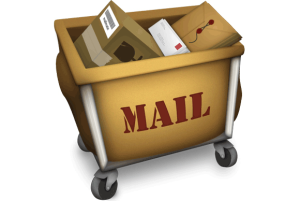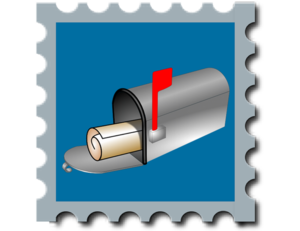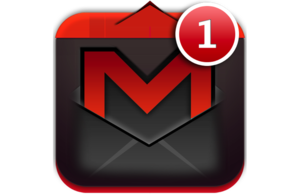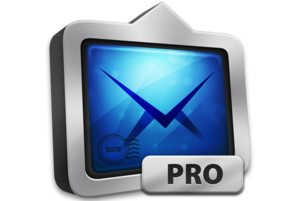Times are changing for email on the Mac. As more people use universally available Web-based services as their primary email accounts, and as POP accounts from Internet providers gather dust, Mac email clients have begun to morph accordingly.
The new contenders focus less on powerful cataloging and search capabilities—most webmail accounts handle those tasks quite well already—and more on lightweight, go-anywhere access. The rise of the Mac App Store has made these clients more affordable and more similar to their iOS cousins.
Apple’s default Mail client remains firmly in the middle of the road. Its meat-and-potatoes feature set will work fine for most people, and it’s still my default email client—though mostly due to my own inertia.
If you’re hankering for something different, though, the latest crop of Mac mail clients has you covered. Better features? A sleeker interface? More raw power? Greater simplicity? Whatever you seek, you’ll find it on the App Store, and in this roundup.
Apple Mail 6.1
Mail 6.1 sports a small handful of new features, and much of what it does offer owes more to features introduced in Mountain Lion OS X than to anything specific to Mail itself.
Besides improving Safari’s ability to email webpages in various forms, and integrating Mountain Lion’s systemwide notification features, Mail 6.1 strengthens its predecessor’s already amped-up search powers. The Lion upgrade sharpened Mail’s ability to find messages across multiple mailboxes, but Mountain Lion enhances its ability to find words and phrases within individual messages.
The new VIP feature is more of a snooze. You can add people to or remove them from your roster of special senders only within individual messages, not from a message list itself. And the VIP feature can do little that Smart Mailboxes and mailbox rules couldn’t do already.
That said, Mail remains a dependable, pleasant workhorse of a client. And it’s among the few non-Microsoft mail programs that support Exchange email.
Mozilla Thunderbird
If you like building things from scratch, Thunderbird may be your dream come true. This free, open-source client from Mozilla, makers of Firefox, lets you bolt various extensions onto the basic email client—or program your own extensions.
By default, Thunderbird is extremely bare-bones, with a last-decade interface and few of its rivals’ fancier features. Add-ons can help fill it out; but they are spotty and difficult to find, and they tend to favor obscure open-source services over more-popular options. I wasn’t impressed with Thunderbird’s security features, which sometimes didn’t flag dubious messages.
Thunderbird’s search, however, is outstanding, with clever filtering abilities and an appealing interface. I can’t believe that some wily rival hasn’t yet swiped the idea. Unfortunately, that excellent feature isn’t enough to persuade me to recommend Thunderbird as a whole.
Freron MailMate 1.5
Gray, bland, and humorless, MailMate compensates for its lack of charm with astonishing efficiency and power. Like a trusted accountant, it may not be the life of the party, but it tackles complex jobs with grim relish.
MailMate’s decision to use text-based buttons instead of icons sacrifices visual flair in return for clarity and ease of use. It lacks the ornamentation of most other clients, but offers mind-boggling horsepower under the hood.
MailMate packs the most thorough search abilities I’ve seen in an email client. Sure, Gmail can find names or addresses, and it can add dates to your calendar. But can it sort messages by server domain, or by a prefix in their subject lines? Can it display statistics about your mail, based on these criteria? MailMate can.
I don’t know anyone who has been longing for these features, but I’m sure that such users exist. And for them, this proudly all-business app will be like manna from the email gods.
Postbox 3
Postbox starts with Apple Mail’s friendliness and ease of use, and then adds a host of why-didn’t-anyone-else-think-of-that features.
From its poise and polish, you’d never know that Postbox was built on Thunderbird’s framework. I liked its eye-pleasing interface, and especially its superb Inspector pane, which plucks links, dates, addresses, package tracking numbers, and more from the body of your message, and displays them for at-a-glance discovery.
Postbox’s designers have thoughtfully built in ways to tie the program to Gmail, Evernote, Dropbox, and even LinkedIn. And unique among the clients I’ve tested, Postbox lets you save precrafted email responses easily, and then deploy them with a few quick clicks. If you have to send out a lot of form email messages, this feature could spare your hands and wrists some serious repetitive stress.
Microsoft Office users, take note: Postbox does not support Exchange. But otherwise, anyone who has grown weary of Apple Mail's limitations will find Postbox, at just $10, an inexpensive and impressive step up.
Arcode Inky
If you need access to your different email accounts in one place, or if you need a consistent interface in a many locations, try Inky. This beautifully designed, free client stores your account information—but not your message—securely in the cloud.
After you create an Inky account, the program will quickly set up your IMAP- or POP-based mailboxes. (IMAP messages may take a while to show up, but they’ll get there eventually.) Thenceforth, when you log in on that computer or anywhere else, Inky will have all your mail waiting for you.
The program also recognizes and categorizes different kinds of messages, from daily deals to social media notices, in custom views that you can switch on or off in its settings.
The only drawback of this otherwise sterling program is that Inky will periodically bug you to tell your friends about it. But considering how impressively it performs, you may want to spread the word anyway.
Macsimize MailForge 3
Many fans of Eudora, the trusty email client, were crestfallen when Mac OS X Lion shut down support for PowerPC-based programs. Macsimize Software’s MailForge has resurrected Eudora in a new, Mountain Lion-friendly incarnation. Unfortunately, though it may be from the past, it’s anything but a blast.
From its chunky interface—the text formatting icons look disturbingly similar to the ones from the PC version of Microsoft Word—to its lack of modern conveniences (like automatic account setup, inline image display, and threaded messages), MailForge feels like a relic from a late and unlamented decade. It can import mail only from Eudora, and its ungainly search feature leaves much to be desired.
Eudora enthusiasts may see MailForge as the answer to their prayers. But if you lack any very strong nostalgia for the email clients of yore, you’ll find plenty of better and less expensive options out there.
Email Pro for Gmail, MailPop Pro for Gmail
These two lightweight Gmail-only clients—think of them as Web browsers that can navigate to only Gmail—offer basic functions at pocket-change prices. Both of them can display Gmail in a simplified mobile view or in a more complex desktop view. And both of them hang out in your menubar, as icons that summon pop-down windows.
To me, Email Pro seemed the better choice. It has a more colorful and intuitive interface, and it explicitly tells you when it is loading messages, instead of just showing a blank window. I also liked its ability to make Gmail my desktop background, persistently hanging out behind my other apps.
The relatively monochromatic MailPop Pro switches between its various views more easily than Email Pro does, and it offers more keyboard shortcuts. But it costs buck more, and has little else to distinguish it. Users who want convenient, no-frills access to Gmail without having to fire up a Web browser might as well stick with Email Pro instead.
Sparrow 1.3.1
Google liked this slender, appealing client so much that it bought the entire company. Even though its creators aren’t updating the client anymore, it’s still available on the Mac App Store (use at your own risk, since you won't be able to get much support). And its pleasantly clean and simple interface—strongly reminiscent of Inky, though Sparrow came first—has won the program more than a few fans.
All in all, Sparrow is an attractive choice for anyone who wants a convenient front-end app for Gmail. It won’t bog you down with features you don’t need, nor will it make you feel as if you were using some hastily engineered workaround.
Postcards from the future
If these clients don't seem quite right for you, keep your eyes peeled for two new Mac clients that are in development as of this writing.
Mailplane, a Gmail client that adds tighter integration with the Mac OS, is currently in beta for version 3.0. Among other new features, it will incorporate Gmail’s latest interface.
The mysterious Unibox promises “a whole new approach to email on the Mac.” The developer has been teasing prospective users by posting snippets of the client's crisp, swanky interface on its blog. At press time, Unibox’s creators still listed it as “coming in early 2013.”
Mac email users have a wider array of higher-quality, better-looking apps to choose from than ever before. Whatever you need email for, the odds are excellent that you’ll find a well-crafted option that delivers what you want.











